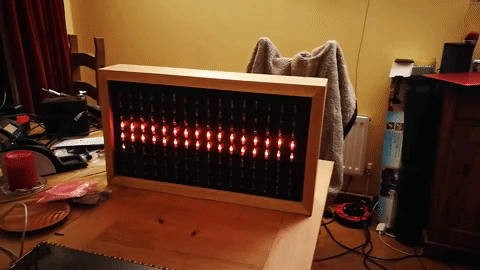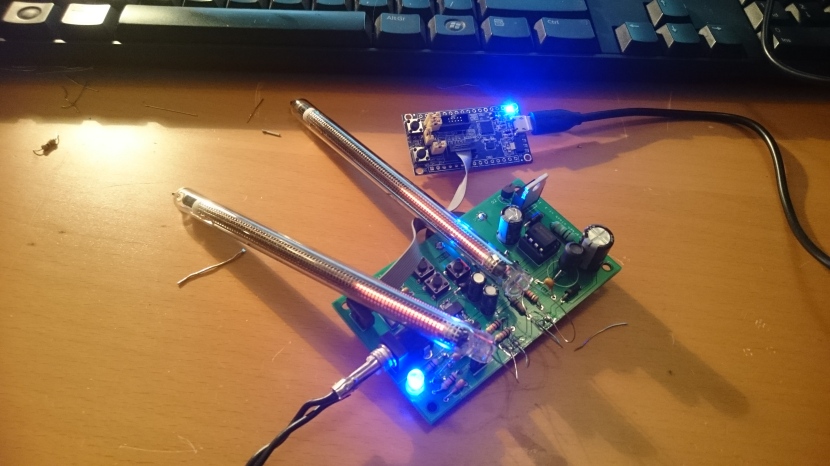Tagged: diy
IN-3 Matrix is nearly there
It’s been a long time since I wrote any updates about my IN-3 matrix project. Whilst I haven’t had much chance to work on it it has come a long long way from the original 4×4 tester.
I built an oak frame, machined an mdf board and attached 128 bulbs. Then I started the long process of wiring up each bulb to the PWM driver boards. In hindsight, I should have designed some kind of PCB strip to connect the bulbs to. This would have saved many hours of labour and been a lot neater. As it is each row of 16 bulbs takes about 1 hour to wire. Very boring so next time I know what to do!
I opted to buy a high(ish) voltage supply from eBay, the display can draw a lot of power when fully lit so despite having literally hundreds of high voltage driver boards for my IN-9 kit I figured to play it safe!
I am still only running some test code to make sure the bulbs light up and in the right order. I’m using an Arduino and the Adafruit Adafruit_PWMServoDriver library to communicate with the PCA9685 PWM drivers. Once I find a couple of hours to finish off the last two rows I’ll focus on what to use as a controller (probably the Teensy I’ve had laying about for 3 years) and actually write some proper firmware.
I’ve also now added a Github repo with all the hardware design files (DesignSpark PCB) for the driver boards and arduino sketches. I’ll continue to add to it as I progress.

Nixie Matrix prototype ready
It was a pretty straightforward task to assemble the bits into a functioning 4×4 nixie matrix. The tubes are mounted on spray painted black MDF with the PWM driver mounted on the back. They are each held in place with a small square of double sided foam tape. Wires soldered on the back to the tubes create a small nest and will be more neatly managed of the bigger version. I programmed an Arduino with the Adafruit pwmtest example and it all works fine. In fact, it works much better than I expected and I think I’m ready to go full scale, with no real modifications. All seems too easy.
I did a measurement of power consumption and the 4×4 uses a power of 1.8W, so will need about 15W for going full scale. Not too bad really for 128 tubes.

Running a PWM test.
Nixie Bargraph Clock
The new boards have arrived and it looks like we have a winner. Now time to write some firmware….




